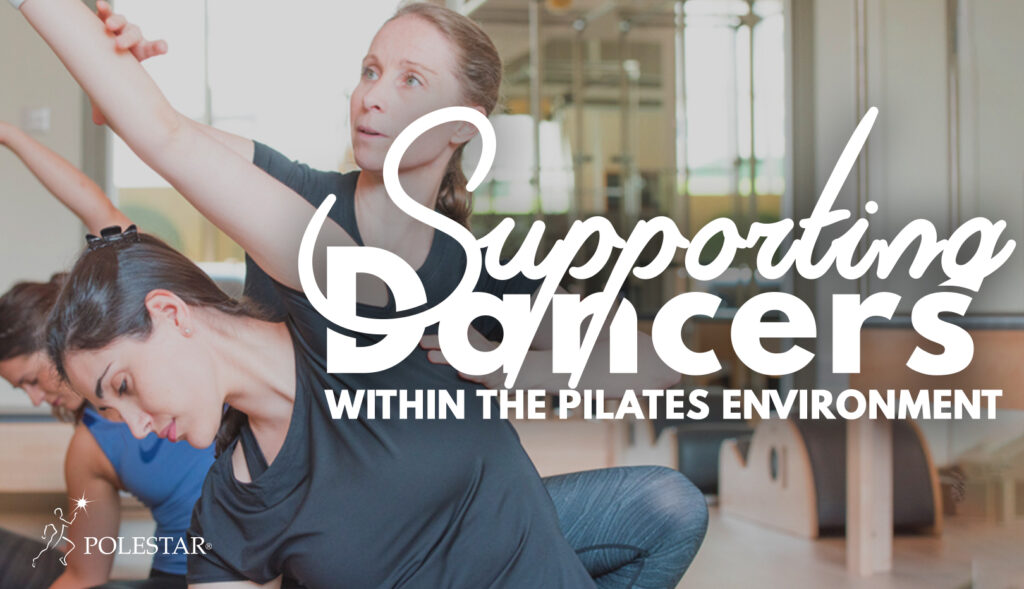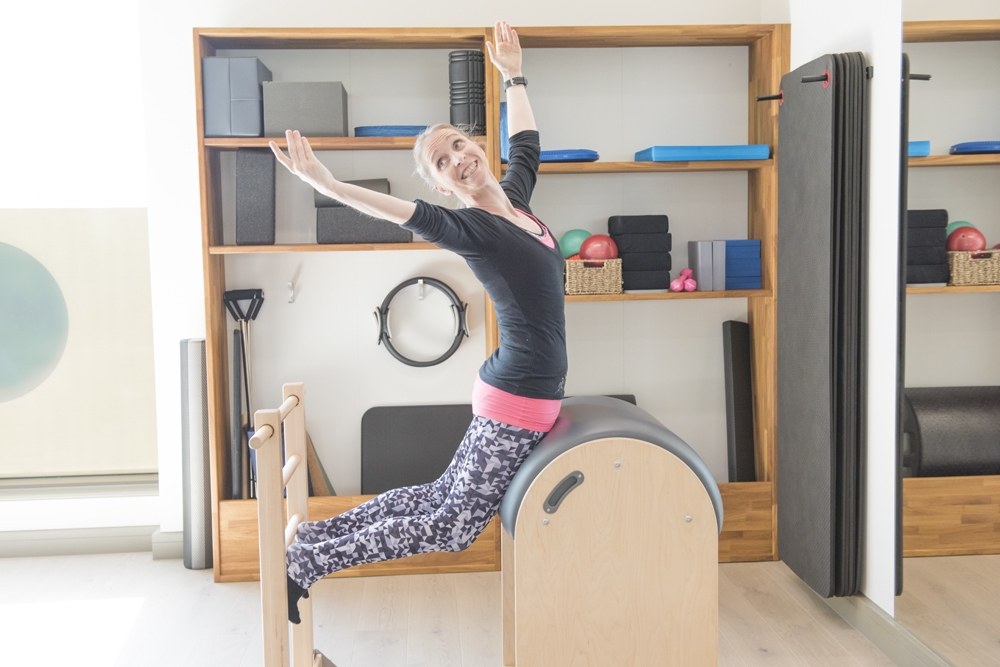
By Vikki Harris, Polestar Pilates Mentor and Practitioner
Supplemental cross-training, alongside technical dance training, is an essential ingredient to developing and enhancing a dancer’s learning and longevity. With the increasing athletic demands and challenging choreography on dancers’ bodies, the Pilates environment provides an opportunity to support optimal performance and reduce the risk of injury.
Many Pilates teachers are seeking advice as dancers venture into their studios for support with their technique, strength, flexibility, management of hyper-mobility, or rehabilitation from injury.
As Pilates teachers, we have valuable tools to support their learning. Of course, this is not new as many dancers sought the support of Joseph Pilates in his New York studio. Though Contrology was not specifically designed for dancers, George Balanchine and Martha Graham were clients of Joe’s who then sent their dancers to his studio for support with their strength or rehabilitation. In this article, we venture into the nature and demands of a dancer in the current age to explore an approach for this population.
The Dancer’s Goals
There are a wide variety of dance styles and techniques ranging from classical ballet, contemporary, commercial, street, ballroom, Latin, tap, jazz, musical theatre, and many more. For the purpose of this article, we will focus on the classical ballet technique, which forms the foundation of many dance programs. When approached by a dancer it is important to understand the nature of the dancer and their goals.
- Are they professional dancers currently performing?
- Is their training schedule full or part-time?
- Are they dancing for recreational purposes?
The age of the dancer is incredibly relevant, as the length and quality of their dance training. What is the dancer’s capacity?
A thorough screening assessment and interview, with support from the dance teacher, choreographer, or therapist will gather valuable information. Dancers are often driven, committed, and motivated with perfectionist traits and have busy training or performance schedules. Supporting a dancer’s mental health as well as physical health is hugely important.
The Demands On The Dancers
The demands of the dancer require a balance of flexibility and strength. Desire is for full ranges at joints within the capability of control throughout the range. Dancers learn through barre work, adage, and allegro exercises to develop a well-tuned repertoire of proprioceptive kinesthetic awareness. A well-programmed dancer has good motor skill recall, an attuned sense of balance, ear and eye vestibular turning skills, and all navigated within gravitational changes and forces with the required speed and reactivity.
This is all possible by utilizing a full-body approach and integration of core stability, along with understanding good breathing dynamics of the diaphragm. This provides benefits for the heart and lungs to fuel muscular activity and for artistic expression and stability.
Pilates & Dance Research
A famous study at Lenox Hill Hospital in New York (1975) compared all forms of sports, including dance, in terms of the athletes’ physical fitness capacities. Ballet, boxing, and hockey were ranked at the top. These activities require high levels of strength, endurance, flexibility, cardiovascular fitness, and other measures of fitness.
An experimental study by McMillan and associates found that a 14-week Pilates intervention improved dynamic alignment in ballet students.
As well, a study by Amorim and Wyon found that dancers who participated in a 12-week Pilates mat intervention increased their levels of muscular strength and flexibility. This is compared to a control group who showed no changes in participating in normal dance class. Due to these muscular adaptations, dancers were able to hold a developpé position for an average of 9 seconds longer and increased their height 4-10°. McMillan A, Proteau L, Lebe R: The effect of Pilates-based training on dancers’ dynamic posture. J Dance Med Sci. 1998;2(3):101-7.
The placement and alignment of the structure and understanding of the bone rhythms educate the dancers’ mechanical relationships for congruency, ease, and control. For example, the pelvic bone relationship to the femur to support optimal turnout in external rotation required for classical ballet.
This also allows for maximum movement efficiency using the myofascial communication network for storing and releasing potential and kinetic energy resources, reducing stress on joints and tissues. The rhythm of the lower extremity bones of the knee, ankle, and foot, for example, supports the strength when standing en pointe. The use of the foot and ankle is vital for speed, agility, and awareness of the supple plié for maximum ground force reaction that is necessary for allegro elevation.
The Complexity Of Dance Training
Instructors working with dancers must also remember the use of the ports de bras, carriage of the arms lines, the head, neck, and upper extremity, and understanding the integration to the torso for support. The dancer is required to look effortless with strength for lifting, floor work, choreographed falls, rolls, and dynamic powerful acrobatic skills.
Dancers are required to learn and remember complex challenging enchainments, or sequences of choreography. These include changes of direction and weight transfers, sometimes off-balance, suspended with a center of gravity shift.
Alongside the speed and accuracy, the dancer must have an innate sense of spatial awareness and what is known as the dancer’s radar, not only for themselves but others on the dance floor.
Dancers are often aware and need support with compensation strategies that appear due to their individual structural design or mobility issues. For example, rolling or sickling in the ankles or feet: a pronated, supinated, inverted, everted alignment issue. Dancers may develop shin splints from poor dance flooring, raked stages, or lack of ballon bounce or elevation. It is also common to develop an inability to land with their heels down from a jump from the over-tensioned Achilles tendon.
Supporting Young Dancers
It is important to understand the adolescent dancer and the growth pattern where bones grow faster than tissues reducing flexibility for a period of time. The speed of growth may also affect the awareness of the center of gravity, and suddenly pirouettes turns aren’t as easy as they were. Dancers may also be working with changing hormonal maturity at this time. Osgood-Schlatter disease is common in young dancers and most often occurs during growth spurts when bones, muscles, tendons, and other structures are changing rapidly.
Starting pointe work too young or pushing the body into extreme positions can limit dancers’ careers and damage young bodies for life. Supporting dancers to be individuals, and therefore encouraging positive experiences and building self-esteem, with sound training, attention to detail, and anatomical awareness is the basis of health in any body and its longevity, especially from the athletic demands on dancers in the profession today.
Vikki Harris is a Polestar Pilates Mentor for Polestar UK and ex-professional Principal Dancer of the Drusilla Duffill Theatre School and owner of V Pilates Studio Burgess Hill





